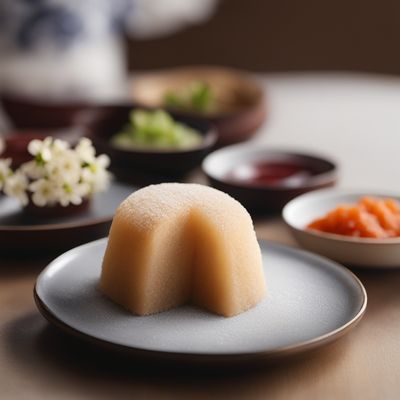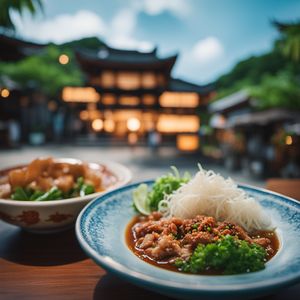
Dish
Gyūhi
Gyuhi
Gyūhi is a popular sweet in Japan and is often used as a base for other sweets, such as daifuku (mochi filled with sweet red bean paste). The mochi is made by mixing mochiko (glutinous rice flour) with sugar and water, and then steaming the mixture. Gyūhi is usually eaten as a snack or dessert. It is soft and chewy with a subtle sweetness.
Origins and history
Gyūhi originated in the Kansai region of Japan and is believed to have been eaten since the Heian period (794-1185). It was originally made with chestnut paste instead of sweet red bean paste. Gyūhi is now a popular sweet throughout Japan and is often used as a base for other sweets.
Dietary considerations
Vegetarian, vegan (if made without animal products)
Variations
There are variations of gyūhi that use different types of flour, such as shiratamako (glutinous rice flour) or kuzuko (arrowroot starch). Some variations also use different types of sweeteners, such as honey or brown sugar.
Presentation and garnishing
Gyūhi is often presented in small bite-sized pieces. It can be garnished with kinako (roasted soybean flour) or sesame seeds for added flavor and texture.
Tips & Tricks
To prevent the mochi from sticking to your hands, dust your hands with cornstarch or potato starch before handling the mochi dough.
Drink pairings
Green tea, matcha, hojicha
Delicious Gyūhi recipes
More dishes from this category... Browse all »

Aamras
Indian cuisine

Aasmi
Indian cuisine

Agra petha
Indian cuisine

Aiyùbīng
Taiwanese cuisine

Ajdnek
Slovenian cuisine

Akafuku
Japanese cuisine

Akanés
Greek cuisine

Akumaki
Japanese cuisine




